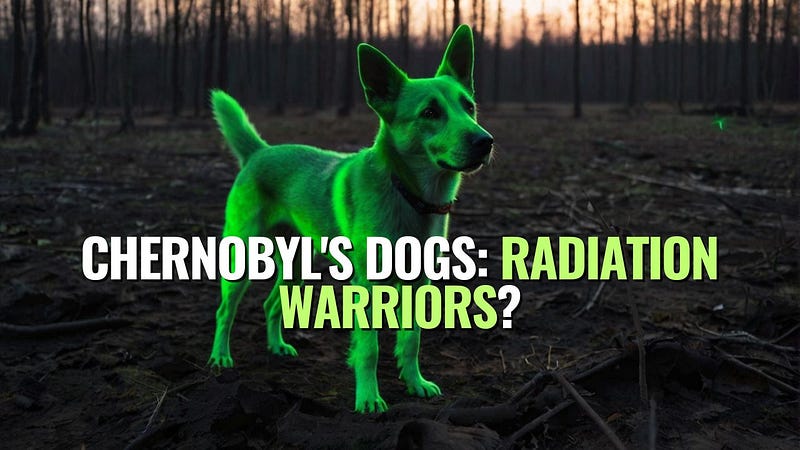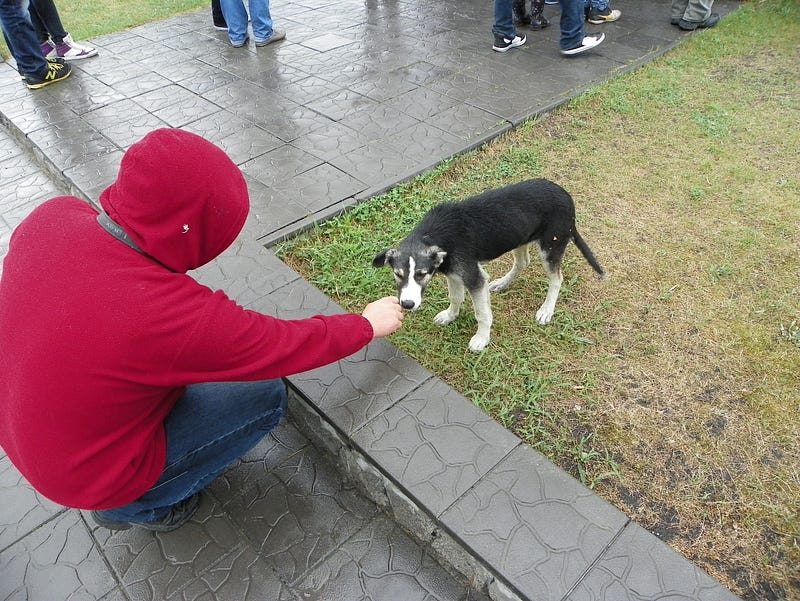Exploring the Lives of Chernobyl's Resilient Canines
Written on
Chapter 1: The Aftermath of Chernobyl
In the wake of the catastrophic nuclear incident at Chernobyl 38 years ago, researchers are delving into how this disaster impacted local wildlife. Today, hundreds of wild dogs inhabit the Chernobyl area, showcasing resilience in an environment still marked by contamination.

Scientists stationed in this region rotate frequently to minimize their exposure to harmful radiation. Visitors can enter the exclusion zone, but they must be accompanied by guides and adhere to strict time limits.
How do Chernobyl's Dogs Survive?
The absence of human life in Pripyat does not equate to a lack of wildlife. Although radioactive fallout led to significant declines in local animal populations, some species, including dogs, have thrived. Recently, researchers noted the emergence of dark-hued frogs within the contaminated zone, suggesting rapid evolutionary changes among amphibians.
A study published in the journal “Science Advances” revealed that radiation exposure has likely altered the genetic makeup of the wild dogs in the area. The extent and type of these changes are contingent upon the radiation levels present in their specific habitats.
These dogs are primarily descendants of pets abandoned during the hasty evacuations following the disaster in 1986. Many families had to leave their homes in a rush, often leaving their pets behind. In the aftermath, these dogs were sustained by cleanup workers and others who remained in the area. Currently, it’s estimated that several hundred wild dogs roam around the power plant, often receiving food from a handful of workers and volunteers.
Chapter 2: The Impact of Nuclear Disaster on Wildlife
The initial extensive genetic studies of these dogs began nearly four decades after the explosion. This research marks a crucial step in understanding the long-term effects of radiation on these canines and their remarkable survival after such a catastrophic event.
Researchers collected preserved blood samples from over 300 dogs between 2017 and 2019, aided by volunteers from the Chernobyl Dog Research Initiative. Their findings align with studies of animals that survived the atomic bomb in Japan.
Tim Mousseau, a biological sciences professor at the University of South Carolina, noted that “increased rates of cataracts have been observed in these dogs, with their eyes being the first to exhibit signs of chronic radiation exposure.” Scientists are also investigating other potential health issues, such as tumors and reduced brain sizes.
Daily Life Amid Radiation
Approximately half of the dogs reside close to the power plant, while others can be found in Chernobyl itself. A limited number of samples were collected from dogs in Slavutych, a city built for relocated power plant workers, located about 50 kilometers away. The origins of these dogs are mixed, yet genetic studies indicate similarities with breeds like German Shepherds, Boxers, and Rottweilers. Notably, mixed-breed dogs tend to be healthier and more resilient than purebreds.
While exposure to ionizing radiation is known to increase genetic mutations across various species, the effects on larger animal populations remain unclear. The genetic diversity of the Chernobyl dogs positions them as valuable subjects for ongoing research. Despite the prevailing conflict in the region, scientists and volunteers have persevered, accessing abandoned areas to gather additional samples.

Who Cares for Chernobyl's Dogs?
The Dogs of Chernobyl initiative, launched by the non-profit organization Clean Futures Fund, involves volunteers